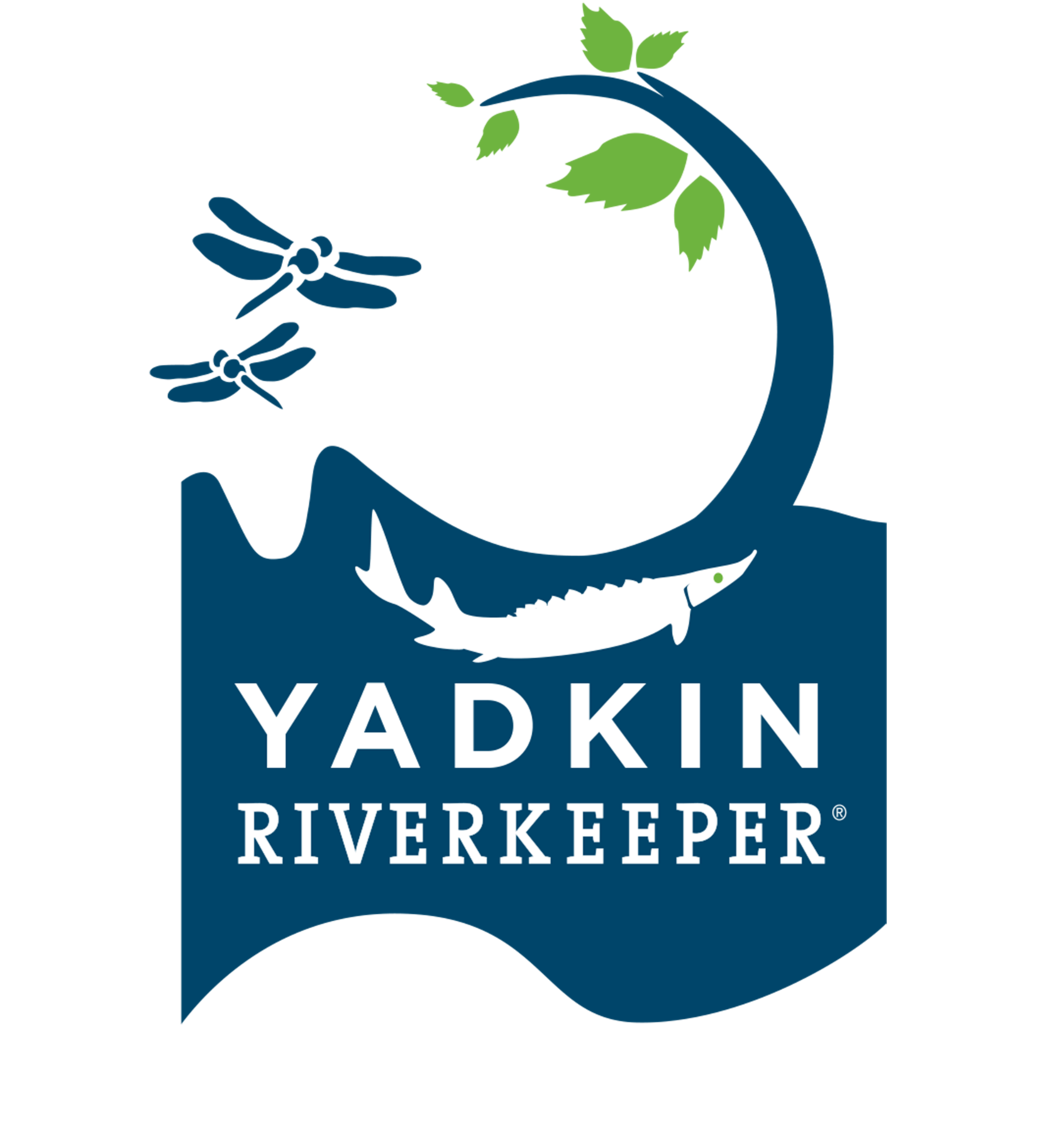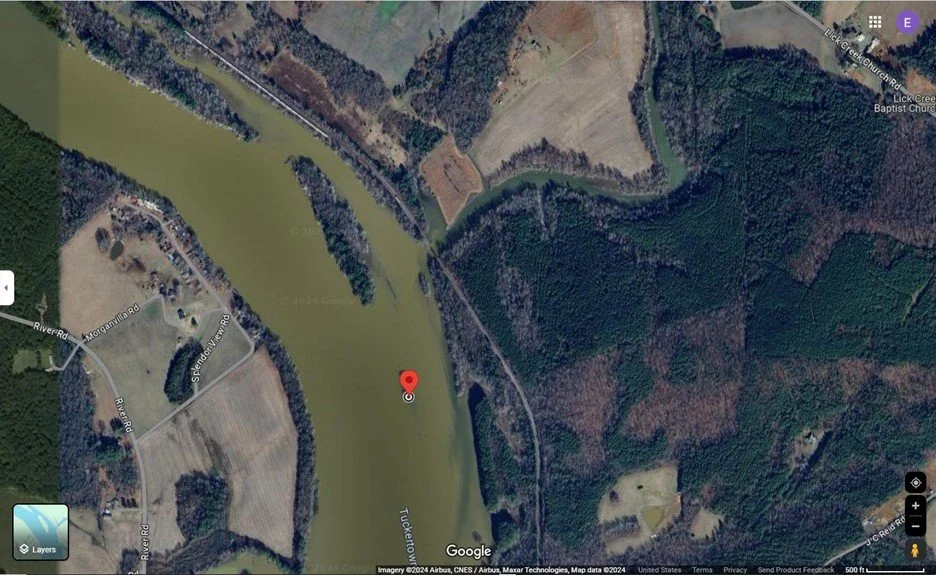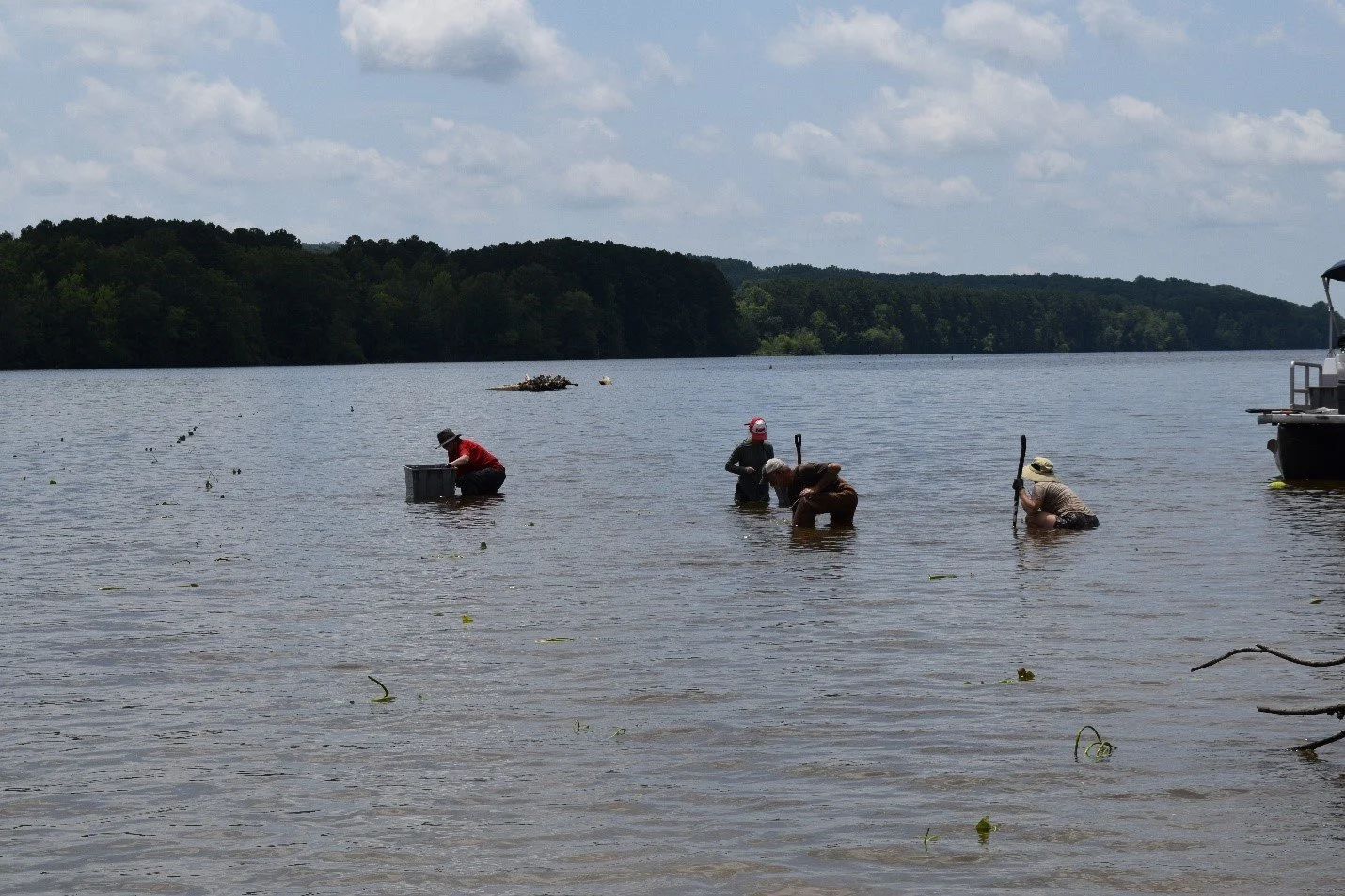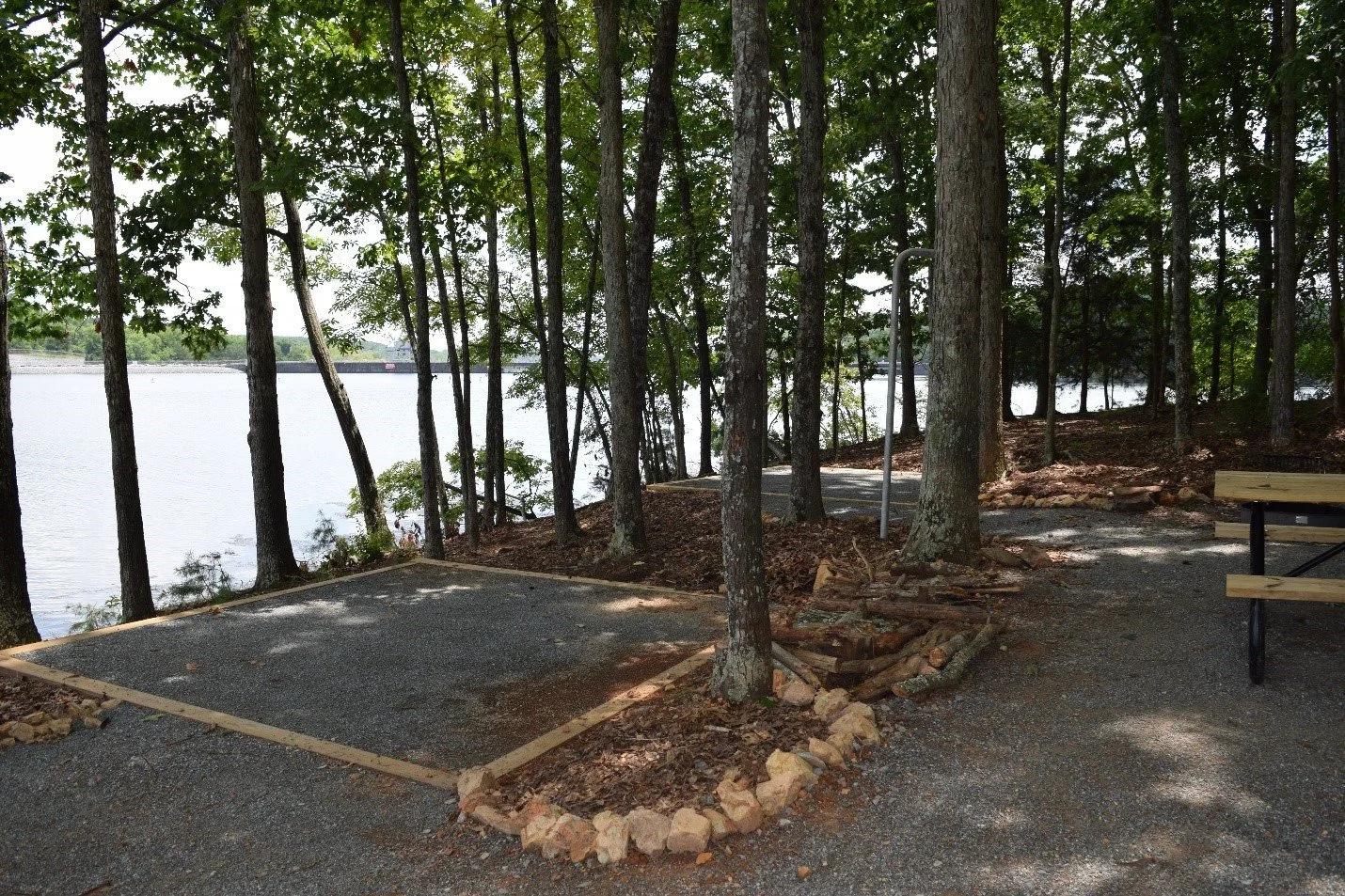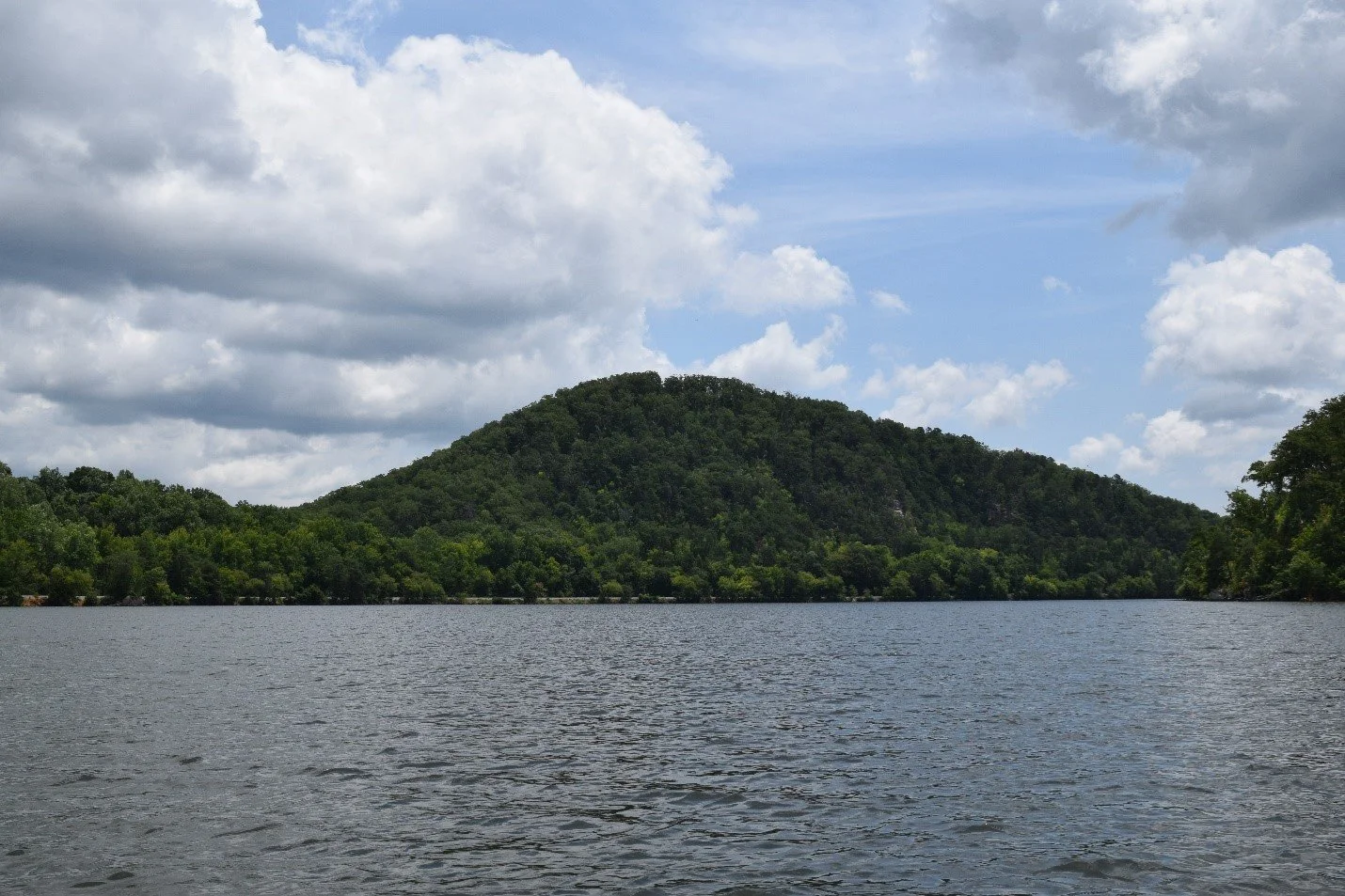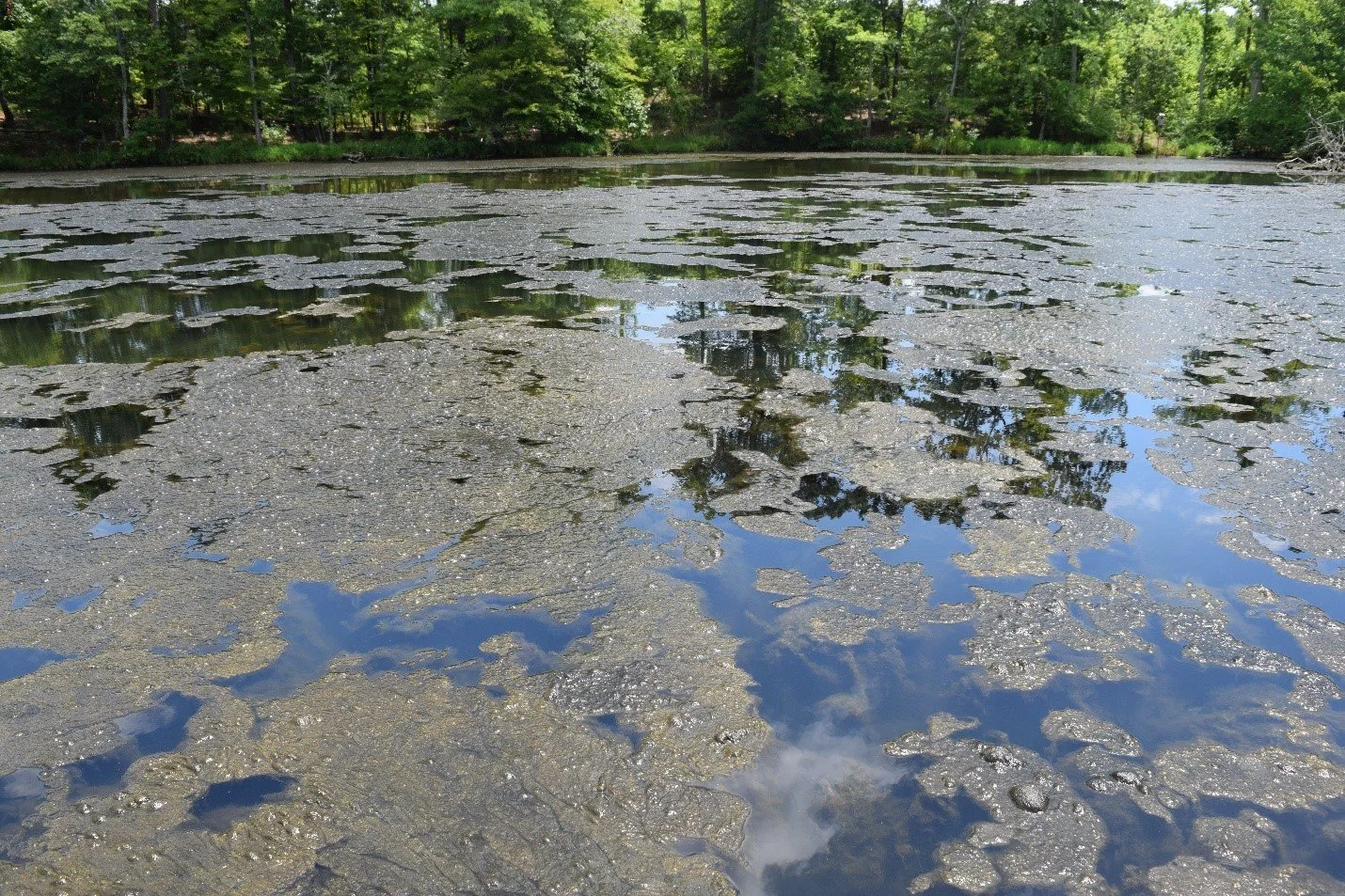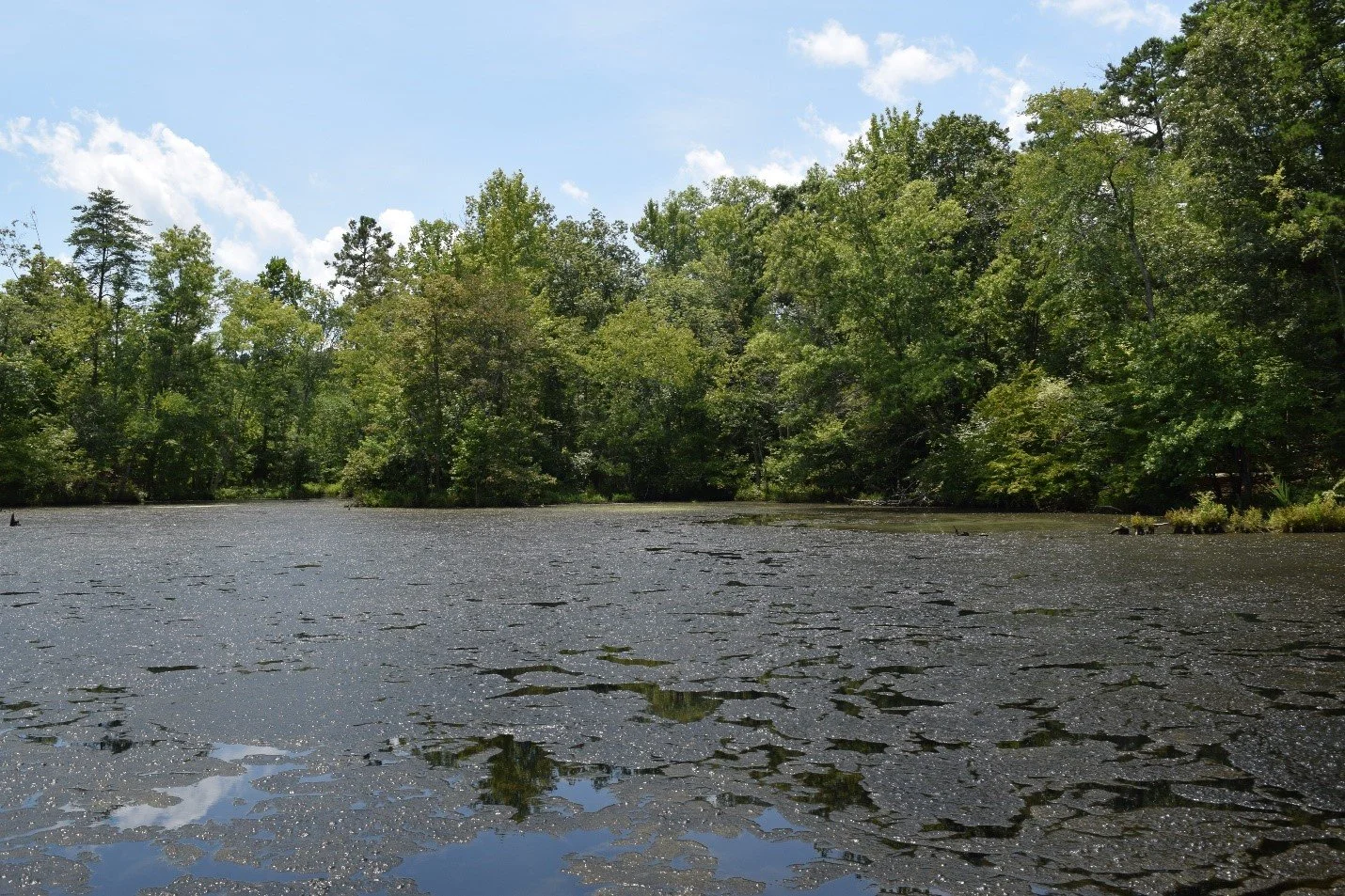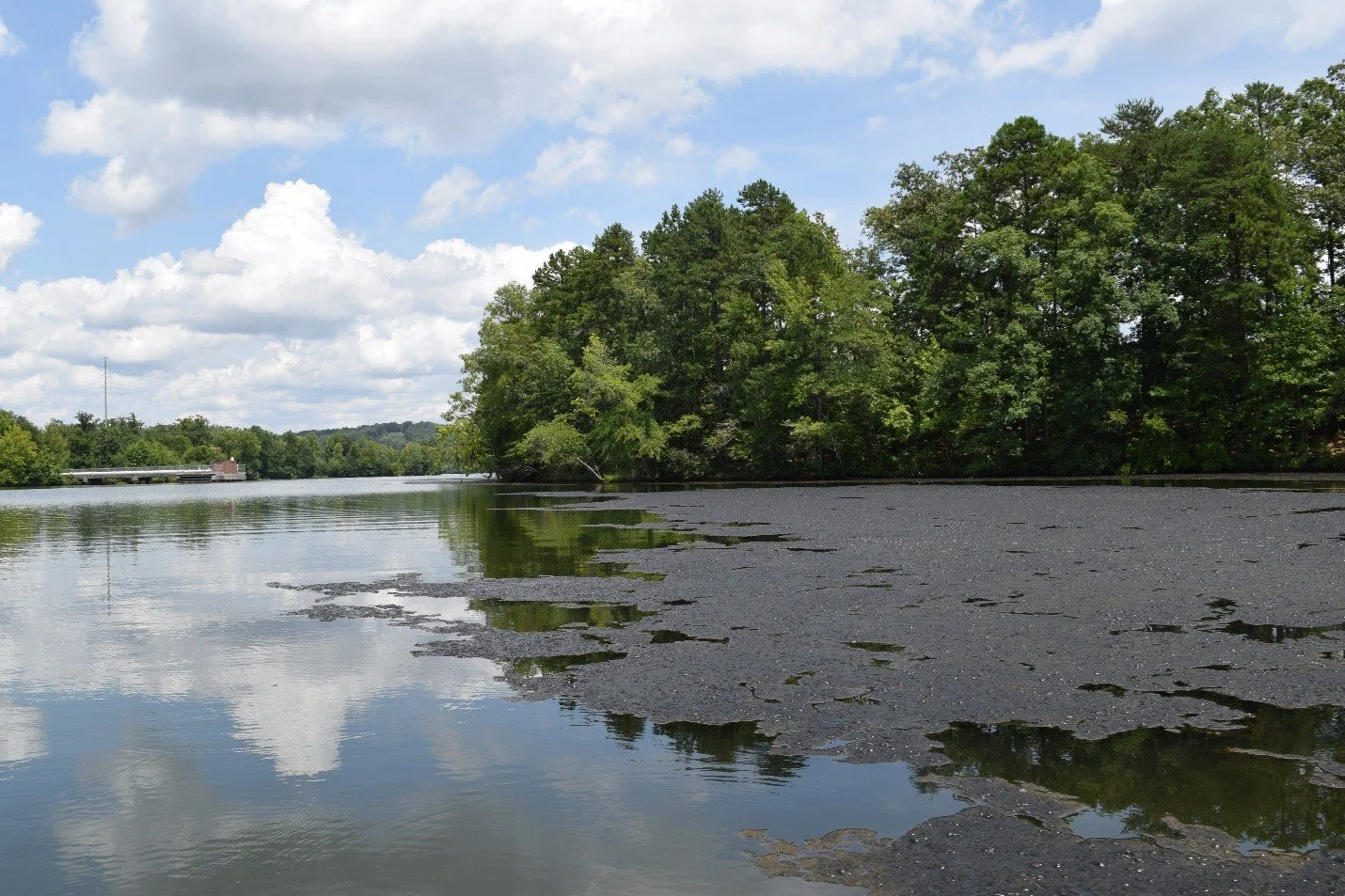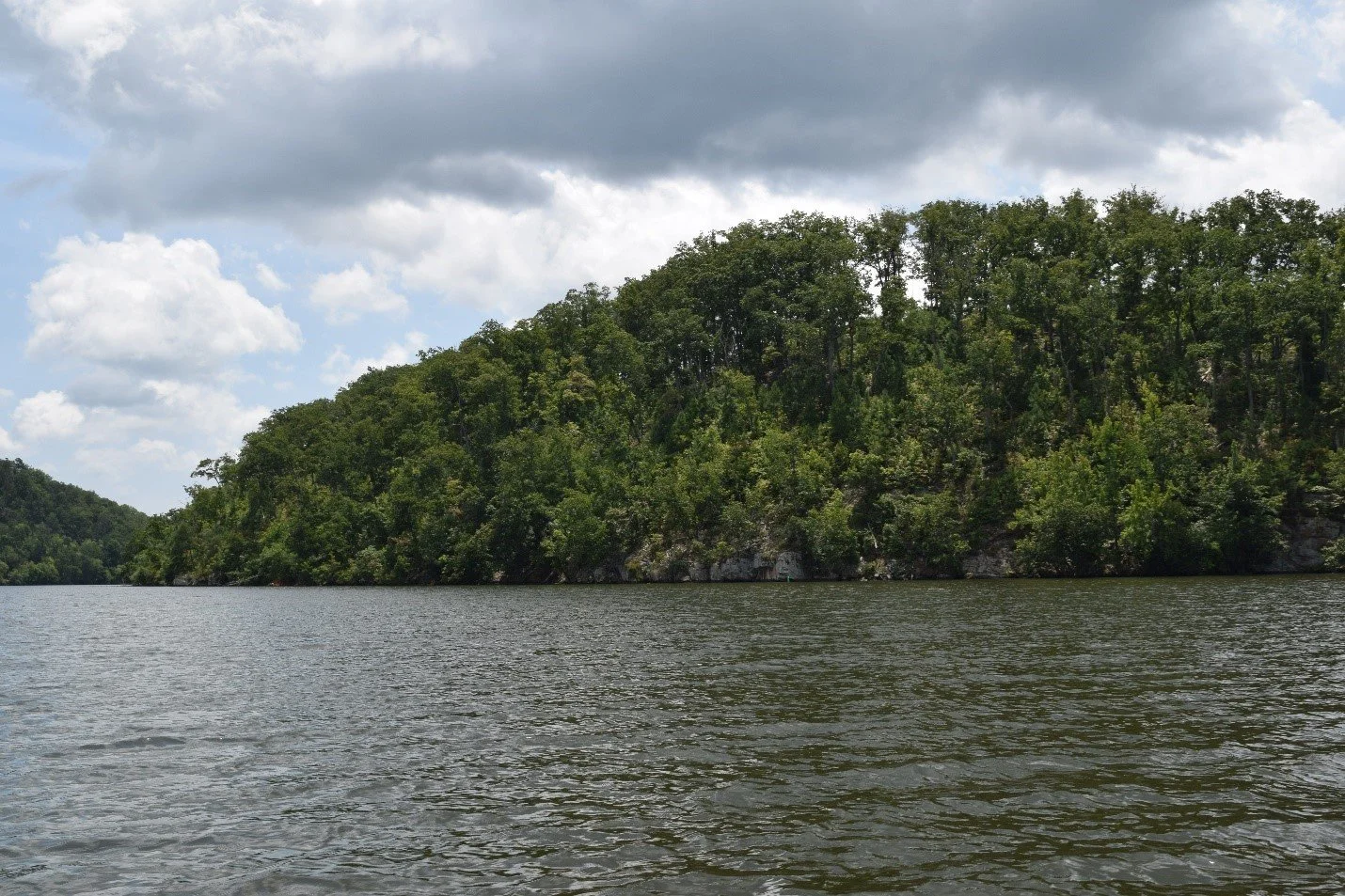-Edgar Miller, Riverkeeper
YRK staff recently had the opportunity to assist the NC Wildlife Resources Commission (NCWRC) in planting native Spatterdock (yellow water lily) submerged aquatic vegetation (SAV) on Tuckertown Reservoir on the Yadkin between Davidson/Montgomery and Rowan/Stanly Counties.
Location of NCWRC Spatterdock SAV plantings on Tuckertown Reservoir, approximately 2 miles down river from Bringle Ferry Road bridge.
YRK Riverkeeper assistant Nicole Eastman and water quality specialist Stephanie Stephens assist NCWRC staff in planting native Spatterdock. Notice the leaves at the top of the plants floating on the surface. This crew planted 275 plants transplanted from the Pee Dee National Wildlife Refuge in one day.
We also took the opportunity while on the Reservoir, to visit the newly constructed campsites near the Tuckertown Dam, as well as to survey the lake for microseira wollei (formerly know as lyngbya) or “black mat algae.” Technically a cyanobacteria, not an algae, the microseira can produce cyanotoxins that are harmful to humans, pets and wildlife.
Two of the four new campsites on Tuckertown Reservoir. The dam can be seen in the background.
View of Tuckertown Reservoir looking towards the Davidson County side from the new campsites.
Tuckertown Reservoir is an approximately 2,500-acre riverine lake impounded by Alcoa in 1962 for the generation of hydroelectric power. It is the last of the hydroelectric dams built on the Yadkin and its shoreline is mostly undeveloped. Fortunately, it will stay that way because it has been transferred to the NCWRC for permanent conservation as state game lands, as part of the Federal Energy Regulatory Commission (FERC) relicensing process.
Railroad trestle at Newsom Cove.
Bald Mountain in Davidson County, part of the NCWRC game lands. Includes a walking trail to the top that can be accessed off Newsom Road.
Tuckertown is truly a spectacular hidden gem flowing through the Uwharrie Mountains, but it is also a “canary in the gem mine,” as it is experiencing the most extensive harmful algal blooms or HABs of all the Yadkin Lakes. (An old mining practice to release a canary to see if there were harmful gases in the mine before sending in the miners as an early warning sign of danger). The HABs on Tuckertown are negatively impacting drinking water supplies and recreational use of the Reservoir. YRK is advocating the adoption of the “High Rock Lake Rules” to reduce sediment and nutrient pollution going into HRL and passed downstream to the other reservoirs fueling the HAB growth.
Noxious bloom of microseira wollei, or “black mat algae” on Tuckertown Reservoir.
Cove on the southwest side of Tuckertown covered in microseria making fishing, boating and swimming impossible and unadvisable.
Microseira bloom near the city of Albemarle’s drinking water intake. The HAB can produce toxins that threaten drinking water supplies and drive-up treatment costs.
The NCWRC plantings are being done to absorb excess nutrients and hopefully out compete the black mat algae, but they are just a drop in the bucket, albeit an important drop, to begin mitigating the impacts of the HABs. Combined with the HRL Rules, mechanical removal (dredging/vacuuming) of the microseira and restoration of native aquatic habitat, there is hope we can reduce the spread of the microseira on Tuckertown and the other Yadkin Lakes.
Rock outcroppings on the Rowan County side of Tuckertown Reservoir.
YRK is working with property owners, state agencies, state legislators, local governments and private companies to address the HABs problem, including the use of innovative technologies that may help in those efforts. HABs mitigation and addressing their root cause, excessive nutrients, are two of YRK’s top priorities as they pose the most significant threats to the future use of the River and Yadkin Lakes as a drinking water source and recreation resource.
For more information on HABs check out YRK’s website.
